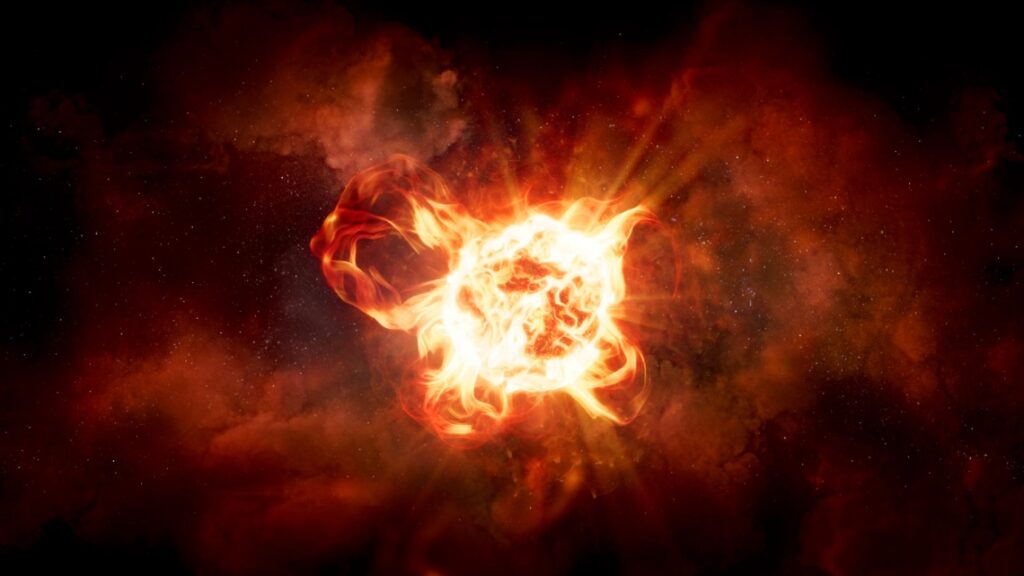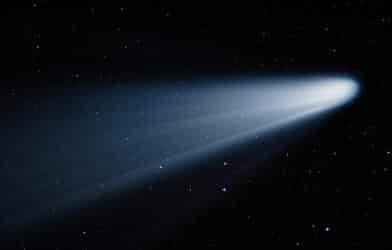Astronomers have captured the astonishing death of a rare hypergiant star. Researchers from the University of Arizona created a detailed, 3D image of the dying star that’s thousands of light years from Earth.
Only a few hypergiant stars are known to exist in the Milky Way, like Betelgeuse, the second brightest star in the Orion constellation, and NML Cygni, in the Cygnus constellation. “Hypergiants tend to experience substantial, sporadic mass loss events that form complex, highly irregular structures composed of arcs, clumps and knots,” a media release about the event explains.
This particular giant star, VY Canis Majoris — or VY CMa — is 3,009 light-years from Earth and located in the southern constellation of Canis Major. Ambesh Singh and Lucy Ziurys, who led the team of researchers, traced the distribution and directions of velocities of a variety of molecules surrounding this dead star.
Ziurys says VY Canis Majoris is probably the most massive star in the Milky Way.
“Think of it as Betelgeuse on steroids,” explains Ziurys, a Regents Professor with joint appointments in the university’s Department of Chemistry and Biochemistry and Steward Observatory. “It is much larger, much more massive and undergoes violent mass eruptions every 200 years or so.”
“We are particularly interested in what hypergiant stars do at end of their lives,” adds Singh, a fourth-year doctoral student in Ziurys’ lab. “People used to think these massive stars simply evolve into supernovae explosions, but we are no longer sure about that.”
Researchers set out to trace certain molecules around this hypergiant star and map them to preexisting images of the dust that was taken by the Hubble Space Telescope.
“Nobody has been able to make a complete image of this star,” says Ziurys. “You don’t see this nice, symmetrical mass loss, but rather convection cells that blow through the star’s photosphere like giant bullets and eject mass in different directions. These are analogous to the coronal arcs seen in the sun, but a billion times larger.”
Researchers were able to obtain preliminary maps of sulfur oxide, sulfur dioxide, silicon oxide, phosphorous oxide and sodium chloride by using the Atacama Large Millimeter Array (ALMA) in Chile. Researchers then constructed an image of the global outflow structure of the hypergiant star on scale that encompassed all ejected material from the star.
“The molecules trace the arcs in the envelope, which tells us molecules and dust are well-mixed,” explains Singh. “The nice thing about emissions of molecules at radio wavelengths is that they provide us with velocity information, as opposed to the dust emission, which is static.”
Researchers procured information about the directions and velocities of the molecules from VY Canis Majoris and mapped them across different regions of the hypergiant star’s envelope.
“So far, we have processed almost a terabyte from ALMA, and we still receive data that we have to go through to get the best resolution possible,” says Singh. Just calibrating and cleaning the data requires up to 20,000 interactions, which takes a day or two for each molecule.”
Ziurys added, “With these observations, we can now put these maps on the sky. Until now, only small portions of this enormous structure had been studied, but you can’t understand the mass loss and how these big stars die unless you look at the entire region. That’s why we wanted to create a complete image.”
The team’s findings were presented at the 240th Meeting of the American Astronomical Society in Pasadena, California.











-392x250.png)
